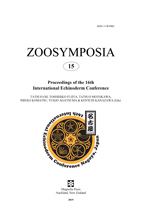Abstract
One of the current challenges in today’s ecology research is to understand and quantify the effects of climate changes on biodiversity. In order to detect possible trends in biodiversity patterns, it is necessary to conduct long-term observations in various and representative environments. This is always challenging, even more difficult in marine habitats and in the Southern Ocean in particular.
Since 2012, a submarine observatory of the coastal benthos has been in operation in the Kerguelen Islands. Eight contrasting sites are monitored using photo and video surveys, loggers, and settlement plots. To quantify potential changes, several photographic analysis techniques are also complemented by scuba diving and ROV (Remotely Operated Vehicle) observations. Investigator scientists have developed and improved new protocols that will be carried out in the long term by the staff of the National Natural Reserve of the French Southern Territories. In order to provide reliable support of species identification, the Proteker program supported by IPEV, French Polar Institute, is currently developing several field guides that should improve the identification of the main taxa being monitored. In light of their abundance in coastal environments of the Kerguelen Islands, and because they are among the most visible invertebrates and the easiest of organisms to consider for monitoring surveys, we first focused on echinoderms. Results of this first study are presented here.
For each echinoderm species, a spreadsheet provides the species name with synonymies, a description of diagnostic features, the recorded distribution, as well as three different types of illustrations: (i) living specimens in their environment, which is useful for scuba divers, (ii) fresh collected specimens out of water, and (iii) specimens fixed in ethanol. Therefore, species can be identified alive while diving, but also after sampling in the field, and after several years in the laboratory. An assessment of Kerguelen’s coastal echinoderms is also given.

